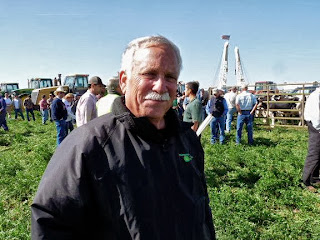THE COST OF PIERCE’S DISEASE and GWSS
 |
| Kate Fuller, post-doctoral researcher at UC Davis |
 |
| Kate Fuller, post-doctoral researcher at UC Davis |
California Farm Employers’ Rights
 By the beginning of next week all of the packers and handlers of California kiwifruit will be packing and shipping the harvested fruit.
By the beginning of next week all of the packers and handlers of California kiwifruit will be packing and shipping the harvested fruit.
 |
| Bagrada Bugs are often seen in the mating activity. |
“I did some research and it looked like the pest was the Bagrada bug. So, we we bagged part of the plant with the bugs and sent them to the Fresno County’s Ag Commissioner office. They forwarded the sample to the CDFA in Sacramento, and CDFA confirmed that it was the Bagrada bug,” said Yang.
 |
| Richard Matoian |
 |
| Fewer Nuts Per Cluster were observed this year. |
 |
| Bob Curtis Will be Honored |
 |
| A crowd gathers for what was a dramatic aerial photo. |
 |
| Steve Malanca, GM of Thomason Tractor Co, Firebaugh |
 |
| Westlands Water District’s Gayle Holman |
 |
| Ken McDonald, Firebaugh City Manager |
 |
| Firebaugh Area Farmer Chris Herd addresses the crowd. |
|
Step/Process
|
Equipment
|
Company
|
Point of Contact
|
|
Alfalfa field
|
20 acres
|
||
|
Prep the field for planting
|
Tillage tractor – Disk equipment
|
||
|
Soil
|
Soil amendments needs to prep soil
|
||
|
Prep Border
|
Tractor
|
||
|
Irrigation
|
Irrigation crew – need X workers plus X of equipment – pipes, hoses, sprinklers, etc.
|
||
|
Water
|
How much water is needed to grow this crop
|
||
|
Seed
|
Bags of seed for planting
|
||
|
Bees
|
Bee hive boxes for Pollinating the flowering plant;
|
||
|
Fertilizer
|
Tanks and equipment for liquid,
|
||
|
Weeds –
Opt. 1
|
Sprayers and appropriate product to handle weeds
|
||
|
Weeds –
Opt. 2
|
Crop duster
|
||
|
Cutting
|
Swather to cut; mower-conditioner to cut
|
||
|
Baler
|
Baler and pick up bales
|
||
|
Loading Bales
|
Truck to pick up bales
|
||
|
Stringers
|
String company that supplies bale ties
|
||
|
Auto Parts Store
|
Provide various parts for vehicles/equipment associated with movable equipment
|
||
|
Tires
|
Tires for equipment
|
||
|
Petroleum
|
Fuel trucks to move the product
|
||
|
Vehicle Repair Shop
|
Repairs on various pieces of vehicles
|
||
|
Crop Insurance
|
Insurance Company
|
||
|
Insurance Company
|
Insurance Company for vehicles, equipment, dwellings
|
||
|
Banking
|
Financial institution for loans
|
||
|
Accountants
|
Provide financial/tax services for respective businesses
|
||
|
Phone Service
|
Provide cellular, land and computer service for business lines
|
||
|
Office Supply Store
|
Office supplies for the business portion of businesses
|
||
|
Cows
|
End user of alfalfa
|
||
|
Milk
|
Stainless steel tanks for milk storage
|
||
|
Children
|
Drinking milk
|
||